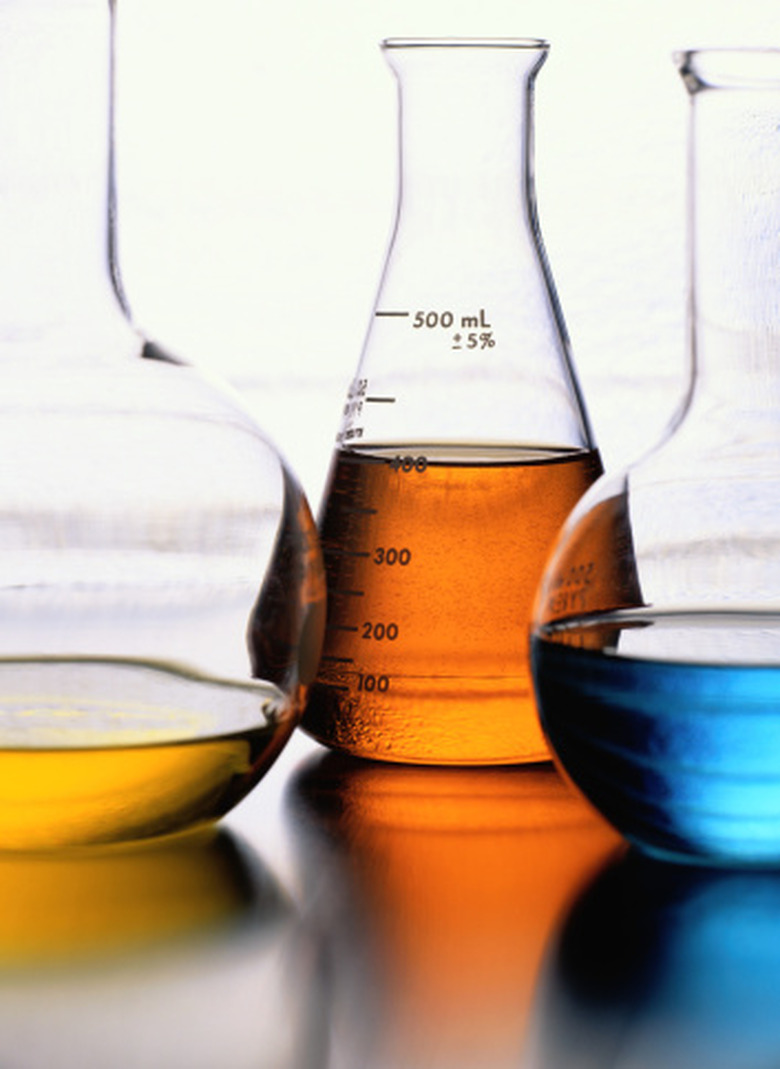How To Calculate Moles From Liters
While in the lab, you may have to work with different solutions. These solutions will have a concentration associated with them. More often than not, the units for describing concentration are moles per liter or M.
What Is a Mole?
What Is a Mole?
A mole (abbreviation mol) is simply a number: 6.022x1023. If you have a mol of chlorine ions, that means you have 6.022x1023 individual ions of chlorine. As you can see, mol is a shorthand for a very large, defined number.
What Is a Liter?
What Is a Liter?
A liter, on the other hand, is a unit of volume in the metric system. This refers to how much space some substance occupies. A liter of water and a liter of ethanol occupy the same amount of space.
Converting from Mol to Liter?
Converting from Mol to Liter?
Simple answer: You can't convert from Mol to liter. Since a mol is a number of a substance and a liter is the volume that substance occupies, there is no way to convert from liters to moles. This is because in a liter you could have any amount of a substance.
For example, you could have 10 molecules of salt or 10,000 molecules of salt. Without the knowledge of how many molecules there are per unit volume you cannot make the conversion.
Using Molarity to Find mol
Using Molarity to Find mol
Instead, take a look at how to calculate mol from M. Molarity gives you a relationship for how many of a substance occupies a certain amount of volume. Given this information, you can calculate how many mol there are in either a part or whole of the solution.
Say you have 1.5 L of 2.25 M CaCl2. How many mols of CaCl2 does the solution contain?
Remember your dimensional analysis. In order to set up the problem correctly all units should cancel until you are only left with the unit that you want: mol.
\(1.5L\Biggl(\dfrac{2.25mol\enspace CaCl_2}{1L}\Biggr) =\enspace 3.375mol\enspace CaCl_2\)
This means in 1.5 L of 2.25 M CaCl2 there are 3.375 mol of CaCl2.
Using Density to Find mol
Using Density to Find mol
Density is reported in units mass per volume. Most typically you will find it as grams per milliliter or g/mL. If you know the molecular formula of the substance, you can then calculate the molarity of the solution because grams can be converted to mol and mL can be converted to liters. Finally, you can find the number of mol in a certain volume of said substance.
Here is an example:
Let's say you have 5 L of toluene (C6H5CH3 or C7H8). How many mols of toluene are in 5 L of toluene?
You cannot solve this without knowing that toluene has a density of 0.87 g/mL. This is because as discussed above, there is no way of knowing how many individual molecules of toluene there are without density information.
Now you can begin setting up the problem as such:
\(5L\Biggl(\dfrac{1000mL}{1L}\Biggr)\Biggl(\dfrac{0.87g\enspace toluene}{1mL}\Biggr) =\enspace 4350g\enspace toluene\)
But wait! Right now, you will end up with grams instead of mols. In order to convert from grams to mols you will need to find the molar mass of toluene. Remember that in order to find the molar mass, you find the mass of each element and multiply by the number that exists within the molecule and add it all together.
For toluene that is: 12.017 (for Carbon) added to 1.0098 for hydrogen. This gives a molar mass of 92.14 g/mol.
Now you can finish the problem:
\(4350g\enspace toluene\Biggl(\dfrac{1mol\enspace toluene}{92.14g\enspace toluene}\Biggr) =\enspace 47.2 mol\enspace toluene\)
Thus, there are 47.2 mol of toluene in 5 L of toluene.
Remember: dimensional analysis is your friend. If the units are not cancelling out to leave you with the one unit you want, then you've made a mistake somewhere. You know what you're looking for, so go back and check.
References
Cite This Article
MLA
Gupta, Riti. "How To Calculate Moles From Liters" sciencing.com, https://www.sciencing.com/calculate-moles-liters-8420424/. 8 February 2020.
APA
Gupta, Riti. (2020, February 8). How To Calculate Moles From Liters. sciencing.com. Retrieved from https://www.sciencing.com/calculate-moles-liters-8420424/
Chicago
Gupta, Riti. How To Calculate Moles From Liters last modified August 30, 2022. https://www.sciencing.com/calculate-moles-liters-8420424/
